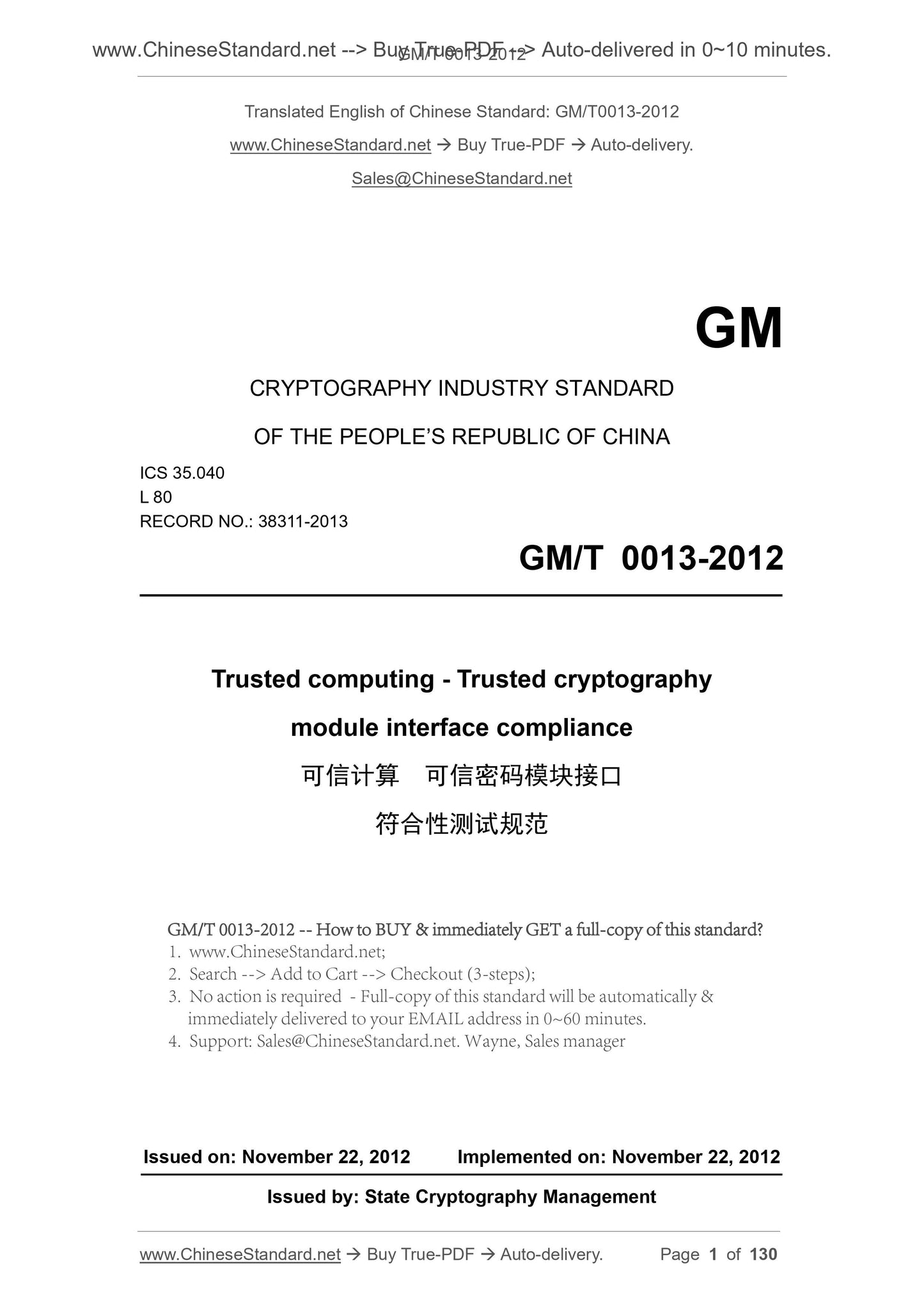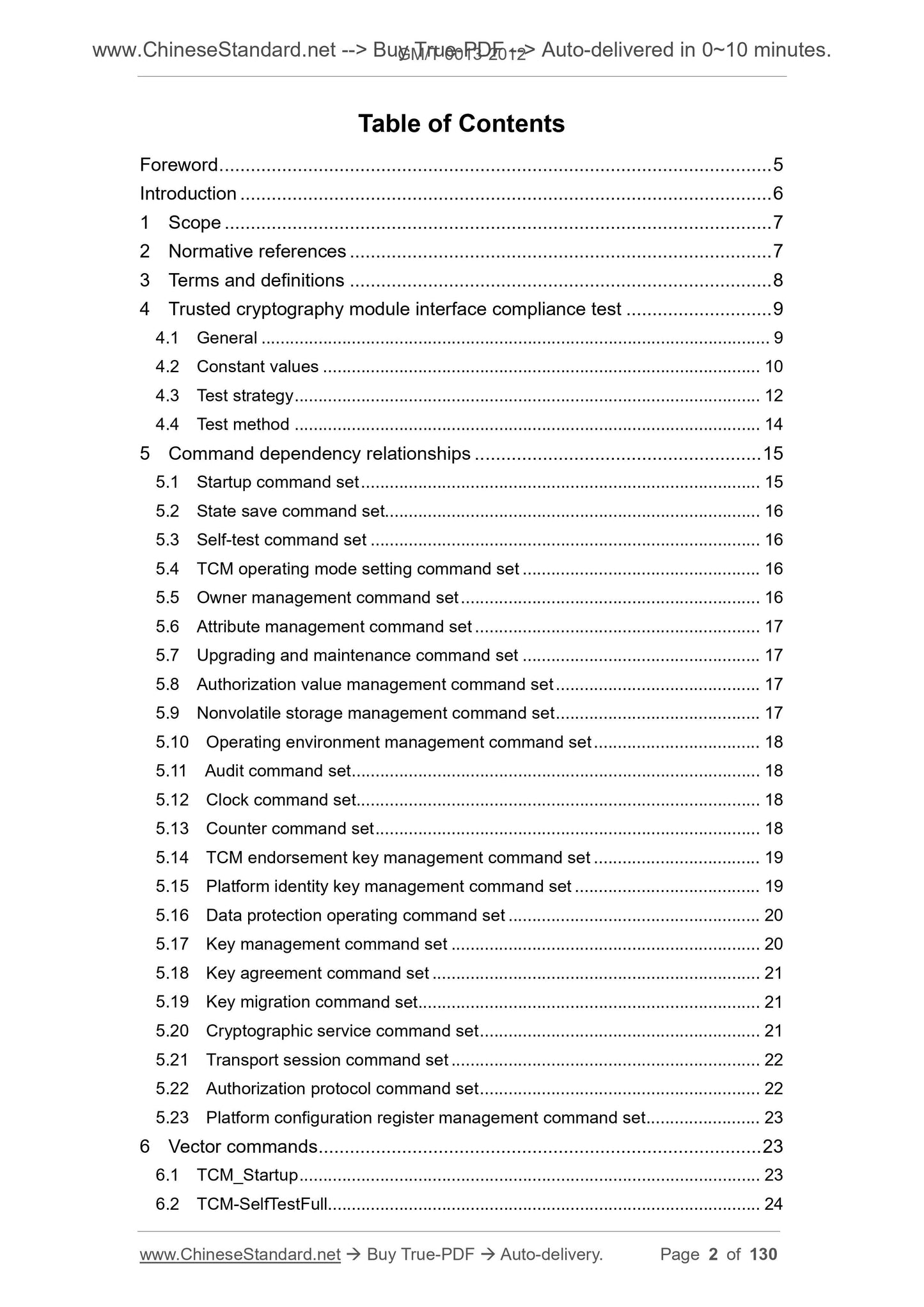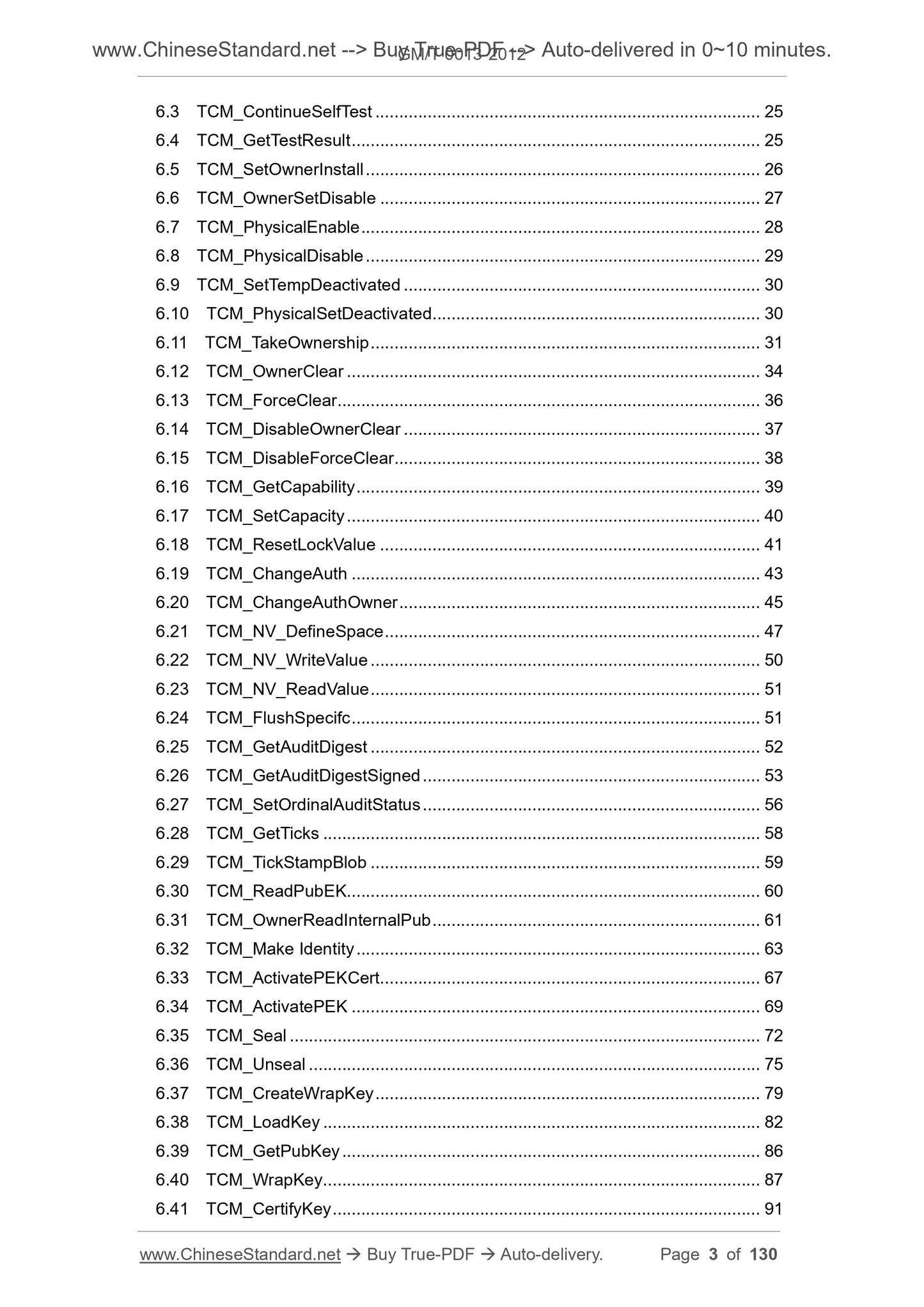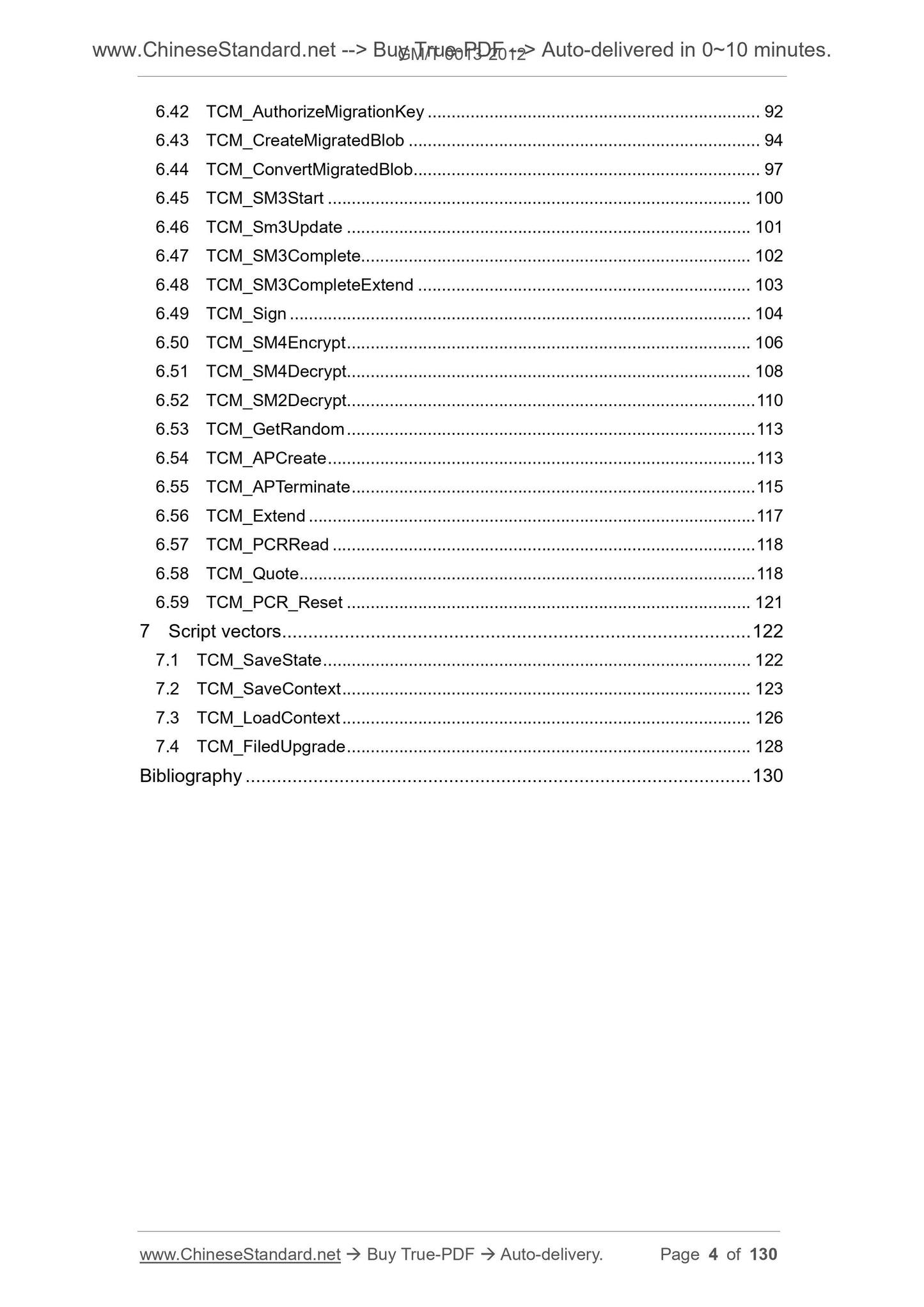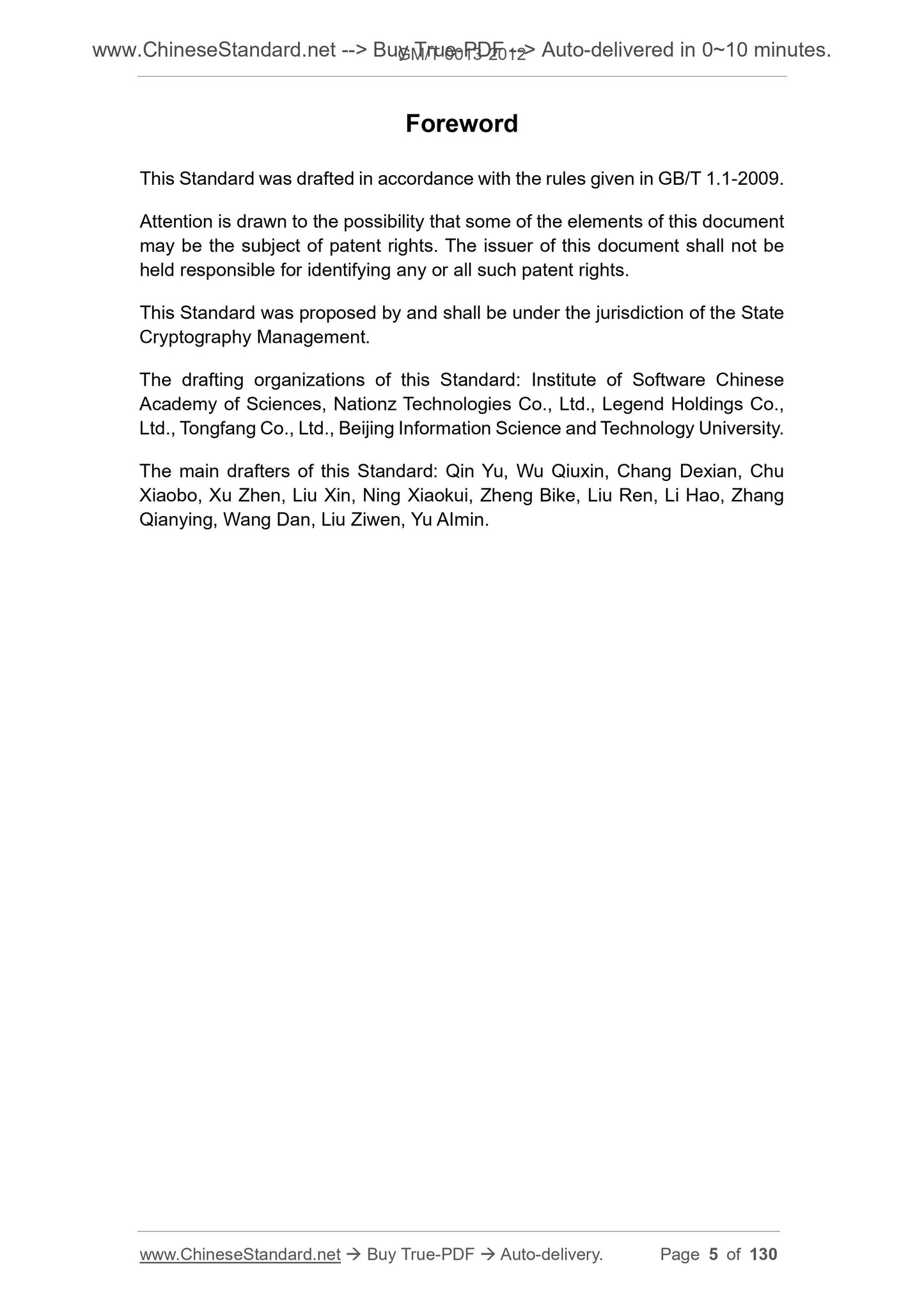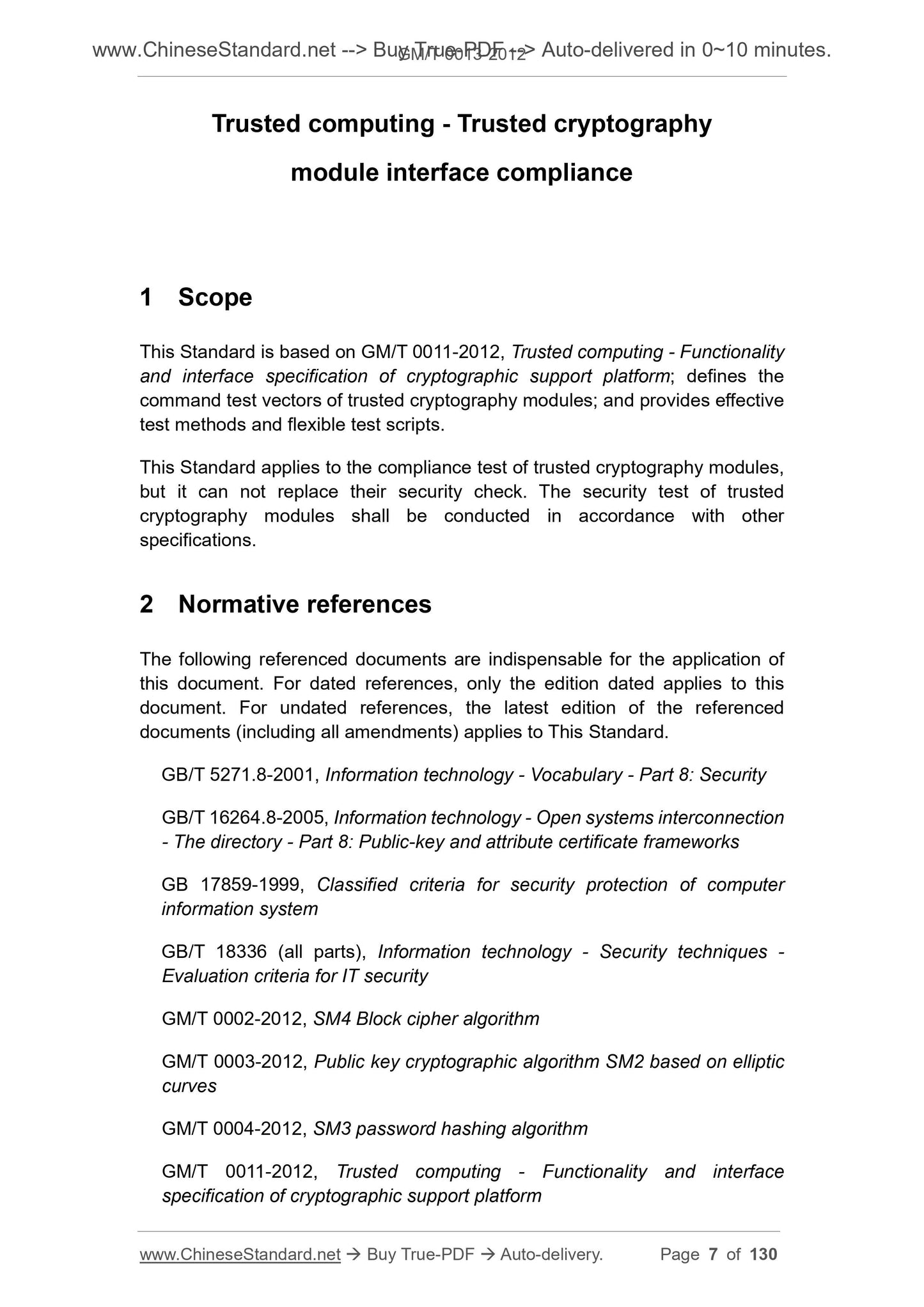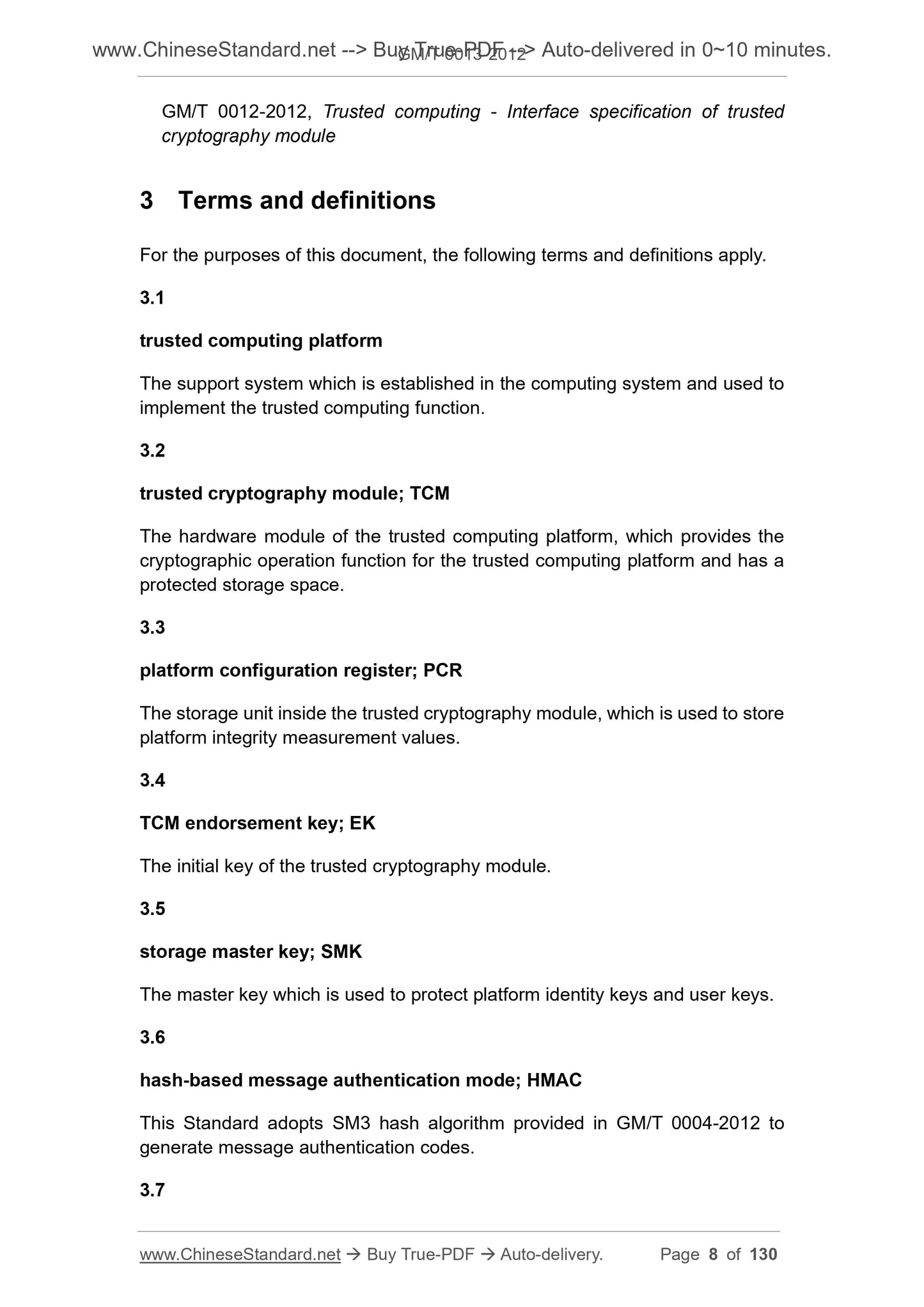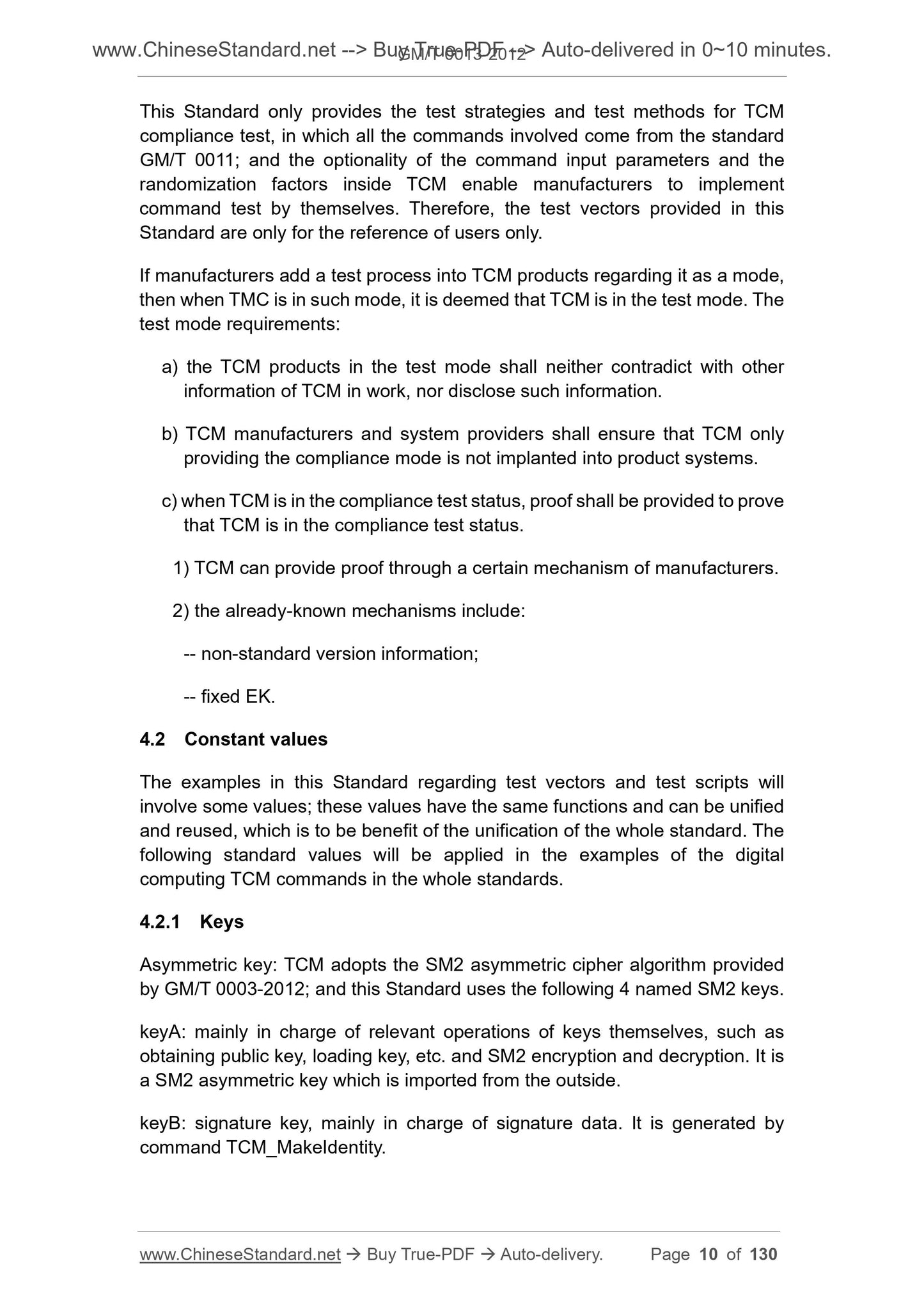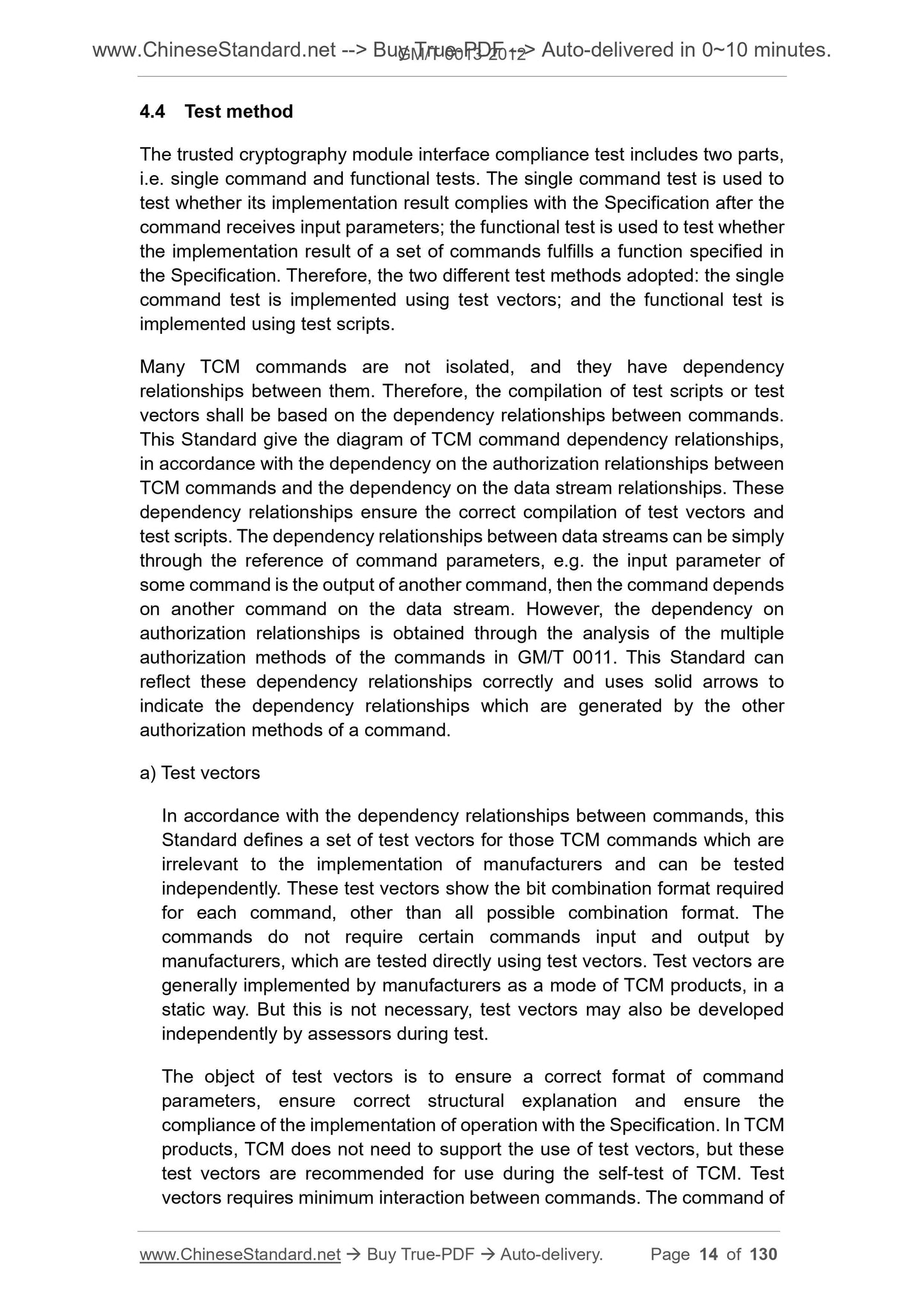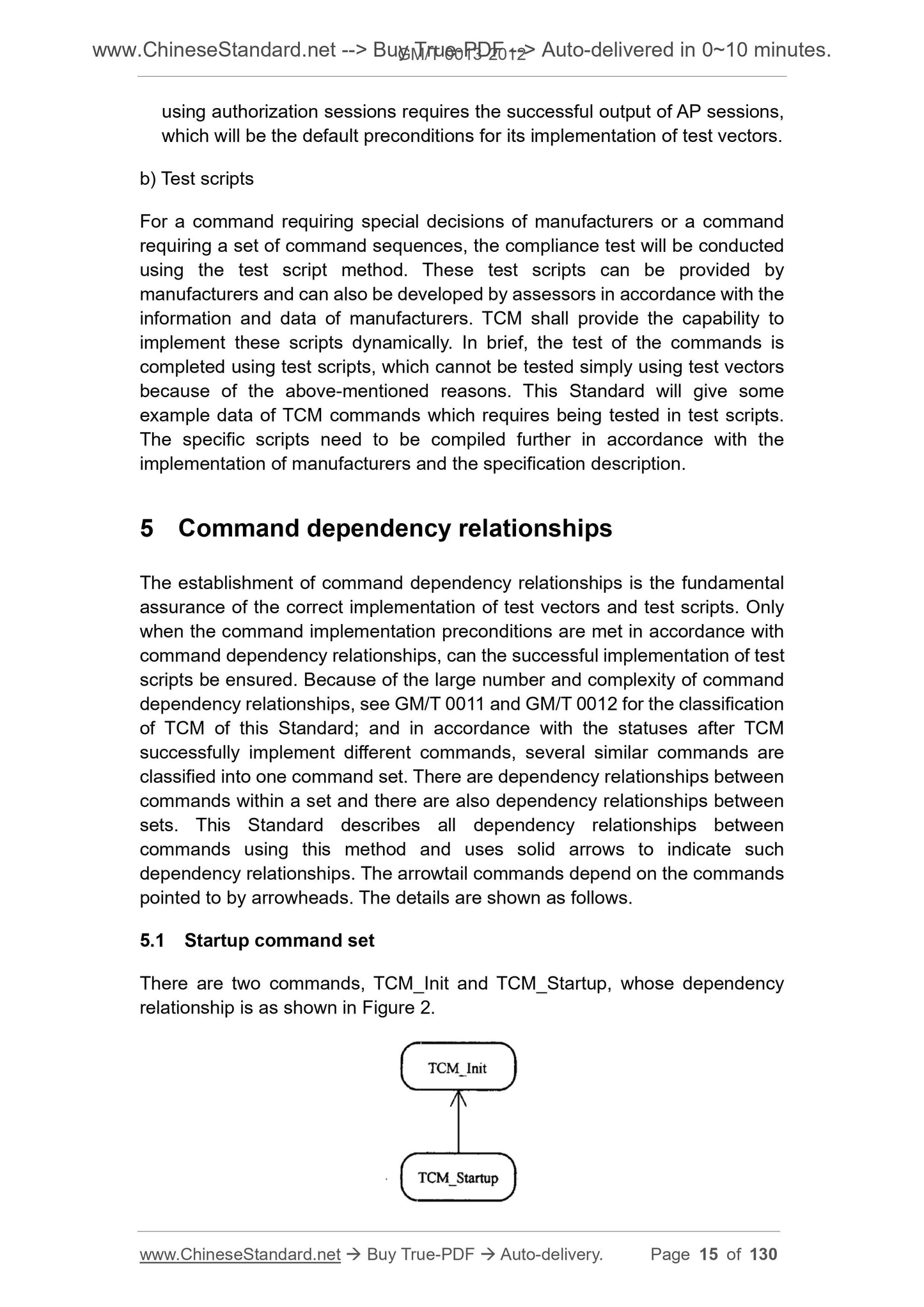1
/
of
10
www.ChineseStandard.us -- Field Test Asia Pte. Ltd.
GM/T 0013-2012 English PDF (GM/T0013-2012)
GM/T 0013-2012 English PDF (GM/T0013-2012)
Regular price
$570.00
Regular price
Sale price
$570.00
Unit price
/
per
Shipping calculated at checkout.
Couldn't load pickup availability
GM/T 0013-2012: Trusted computing--Trusted cryptography module interface compliance
Delivery: 9 seconds. Download (and Email) true-PDF + Invoice.Get Quotation: Click GM/T 0013-2012 (Self-service in 1-minute)
Newer / historical versions: GM/T 0013-2012
Preview True-PDF
Scope
This Standard is based on GM/T 0011-2012, Trusted computing - Functionalityand interface specification of cryptographic support platform; defines the
command test vectors of trusted cryptography modules; and provides effective
test methods and flexible test scripts.
This Standard applies to the compliance test of trusted cryptography modules,
but it can not replace their security check. The security test of trusted
cryptography modules shall be conducted in accordance with other
specifications.
Basic Data
| Standard ID | GM/T 0013-2012 (GM/T0013-2012) |
| Description (Translated English) | Trusted computing--Trusted cryptography module interface compliance |
| Sector / Industry | Chinese Industry Standard (Recommended) |
| Classification of Chinese Standard | L80 |
| Word Count Estimation | 109,136 |
| Date of Issue | 11/22/2012 |
| Date of Implementation | 11/22/2012 |
| Issuing agency(ies) | State Administration of Cryptography |
Share
